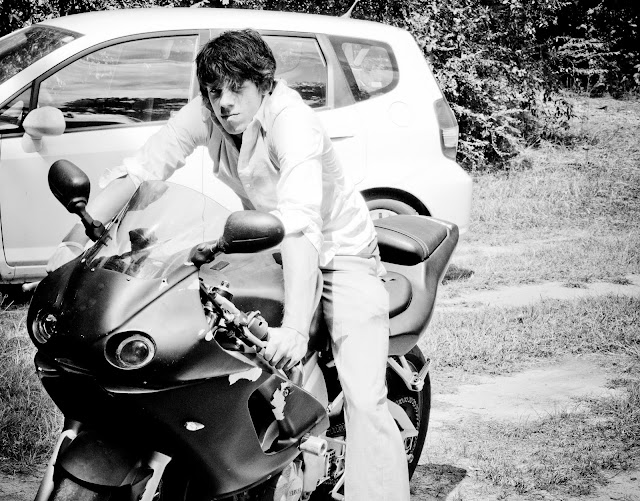September. It has blown by. Some of my favorites this month:
This is a picture that I took at the Atlanta Motor Speedway. An interesting technique that I have found is to convert a photo to black & white and overexpose it. In this case, I believe that it captures my environment perfectly. Nascar races are
raw. And so are their fans. I can almost feel the grit in the photo.
I figured I might as well show this one as well. The same technique was applied. B&W, overexpose. the darks need to be
dark. We want a full range of values still. Dark darks and white whites. Basics! Lest we not forget them! --also taken at the race
I have mixed opinions here.The texture of the fence and cement wall are wonderful, with a sort of distorted color to make it intersting.
The car. Does blur work here? yea...no...maybe? It shows speed and direction following the lines of the track, yes, but I almost wish it were More blurred. either that or really clear, like pictures of water droplets frozen in time it would interest the viewer, I think. I got in trouble for standing in this spot to take a picture so I couldn't test my theories. Hm.. perhaps next time.
John Schnatter (Papa John) decided to make a surprise appearance to some lucky fans, and one lucky photographer. Actually, the reason I was at the track was because I got the opportunity to work at a mobile kitchen in winner's circle of the track because Papa John's was sponsoring the race for the day. I made he and his family their pizzas. Claim to fame!
I love the emotion in this picture- I'm not sure, but it seems that Papa John really is enjoying himself for a few moments. He's still proud of his product and apparently gives it away by the hand fulls.
Yep. Here we are, inside the mobile kitchen. In this bag, for those who are curious, is what we call "dustinator", a cleverly named formula of flower and corn meal that is used to coat and handle the dough.
"Ya see that? Yep, son. It's yet another fast and obnoxiously loud car. Isn't it wonderful?"
Alright, I've tons more, but enough of that event. Here's a few more that I snapped on a separate night. This was on a walk around campus.
I was walking with the GCSU Wesley praise band because I was doing some band pics for them- I decided to do portraits of each band member. Here are 2:
The challenge. I took these pictures at night.. when it's dark.. with a stock flash that comes with the camera. The challenge was editing them to undo the damage a bad flash can do. Some things, the wrong things, were over exposed while others needed more light and focusing is an issue because the camera can't see much to focus on (because all it sees is black) among other difficulties. But anyway, lesson learned. Night portraiture,
not easy.
My roommate is trying to sell his R6 crotch rocket. As I'm finding a pattern, he asked me to take pictures of his newly acclaimed vehicle so that he could prove a motorcycle has existed in his past. Note the poor editing in the bottom left corner of the frame/border- I assumed anyone looking hard enough at a picture on craigslist to notice and care about such a flaw Probably is not the type of person interested in buying a crotch rocket, so I just didn't really bother with it.
I like to think I took full advantage of this fine piece of machinery which still sits in my yard.
Yes, those pants are from the 70's.
Later I will post some drawings and sketches that I've done in various art classes and notebooks, but for now, hopefully this will satisfy. More to come.















